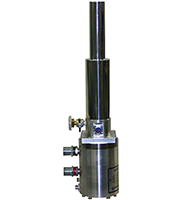Electron Transport
In classical physics, when an electric potential is applied through a bulk of metal or semiconductor, carriers will be driven. The electrical resistance can be obtained by Ohm’s law. This effect is called electron transport. This is one of the most common techniques to characterize materials. Many of the phenomena can be observed through this technique, such as electrical conductivity, electron mobility. As the dimension of materials reduces to be comparable to de Broglie wavelength or inelastic scattering length (2D materials, nanowires, and quantum dots), quantum phenomena emerge at cryogenic temperatures, e.g., weak localization in 2D materials and single electron of quantum dots. The four-point probe method is generally applied for electron transport to eliminate the lead and contact resistance for more accurate measurements.
Customer References:
Daniel Wasserman, Electrical and Computer Engineering, Microelectronics Research Center, University of Texas at Austin, USA: Infrared Physics and Technology 109, 103390 (2020); Nat Commun 10, 1625 (2019).
Related Cryostats:
X-3 NON-OPTICAL
Excellent choice for most sample and device electrical testing
LT3
The backbone of low vibration cryogenic research
Atomic resolution is achieved through a series of heat exchangers
Coaxial shield flow transfer line ensures liquid at the tip
LT4
All-purpose, low cost flow cryostat
Maintains the high cooling power of the LT3
UHV option available
| Cryostat Model | Type |
|---|---|
| LT4 | Flow |



